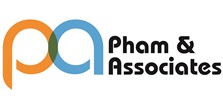Summary about Abuse of Trademark Rights
1. General Concept
Abuse of trademark rights occurs when the trademark owner or licensee exploits their rights beyond the limits allowed by law, with the purpose of restricting competition or causing unreasonable harm to others. Intellectual property rights are not absolute, and must be exercised in a manner consistent with the purpose of protection, respecting public interest, and avoiding the obstruction of legitimate commercial activities.
2. Common Types of Trademark Abuse
a) Obstructing legitimate use (hindering fair use)
Filing or threatening lawsuits against businesses that use descriptive terms or nominative references lawfully. Example: The owner of the trademark 'Sun Fresh' sues a shop for using 'Fresh orange juice' even though it is merely descriptive.
b) Blocking registrations (“trademark squatting”)
Registering numerous similar marks to competitors or registering common descriptive terms to block others from registration, or renewing a mark without genuine use simply to retain the right to block others.
c) Abuse in licensing contracts
Imposing anti-competitive contractual terms, such as prohibiting the licensee from dealing in competing products, or imposing unreasonable resale price maintenance.
d) Extending monopoly via strategic rebranding
Registering new variants of a mark to maintain the monopoly effect when the original mark is close to expiry, thereby preventing the use of a term that has become generic.
e) Sham litigation
Using litigation as a PR or intimidation tool, even when the claim has no legal basis.
3. International and National Legal Frameworks
International
TRIPS Agreement - Article 8.2: Members may adopt measures to prevent abuse of IP rights that adversely affect trade or competition.
US/EU: Competition laws address cases of trademark bullying or abuse of dominant position.
Vietnam
IP Law - Article 7.2: The exercise of IP rights must not be abused to restrict competition.
Articles 125.2 and 125.3: The owner may not prohibit honest use.
Competition Law 2018: Prohibits using IP rights to restrict competition if in a dominant or monopoly position.
4. Identification and Remedies
Identification: Conduct that exceeds the legitimate purpose of trademark protection, aimed at blocking lawful competitors.
Remedies: File for cancellation, competition complaint, or counterclaim in IP litigation.
5. Examples
Example 1: A coffee corporation owning 'Mountain Coffee' sues a small shop for using 'fresh coffee from the mountain', although it is purely descriptive.
Example 2: Company A owns 'Blue Drop' but does not trade such products, yet renews the mark and blocks Company B from launching 'Drop of Blue'.
6. Comparative Table: Vietnam – US – EU
|
Criteria |
Vietnam |
United States |
European Union |
|
Legal basis |
IP Law, Competition Law |
Lanham Act + Antitrust |
EUTMR/EUTMDR + Art. 102 TFEU |
|
Definition |
Not defined separately, based on anti-competitive abuse |
Trademark bullying, abuse of TM rights |
Abuse of dominant position through TM rights |
|
Remedies |
Complaint, cancellation, competition claim |
Counterclaim, FTC, antitrust lawsuit |
Competition authority, ECJ case law |
|
Focus |
Protecting public interest and fair competition |
Preventing oppression of smaller competitors |
Preventing abuse of market dominance |


